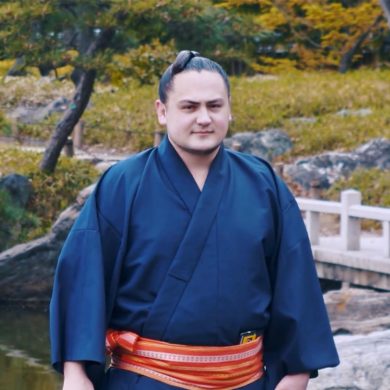Calls to Action from Loved Ones of Missing and Murdered Indigenous Women and Girls
The annual vigils to honour Indigenous women lost to violence were held across Canada in October. How have things changed since the National Inquiry concluded?
As we approached the eternal flame burning outside of Parliament Hill in Ottawa, about three dozen Indigenous people and their friends gathered holding pictures of deceased Indigenous women and girls. The faces in the pictures are a small representation of the many Indigenous women who have gone missing or have been murdered in Canada over the last three decades.
The sombre Ottawa event is held each year on October 4th, and is one of dozens of vigils held across Canada in honour of missing and murdered Indigenous women and girls.
Titled “Sisters in Spirit” the event was started in 2002 by Indigenous female activists seeking justice for their missing or murdered loved ones.
One of the founders of the Families of Sisters in Spirit Vigils is Bridget Tolley, who spoke at the vigil held in Ottawa on Parliament Hill. Her mother was hit and killed by a car driven by a Quebec Provincial Police officer in 2001, which galvanized her to become an Indigenous women’s advocate. The police never admitted any wrongdoing in Tolley’s mother’s death.
“Let us all together stand,” said Tolley, “The mothers, the grandmothers, the daughters and the aunties and the communities and the nations, let us stand together. The only way change is going to come is if Canadians stand with us, raise that voice and make this country what was intended for our ancestors and our settlers.”
In Canada, there are nearly 1200 reported cases of missing and murdered Indigenous women and girls between 1980 and 2012. Recently, the federal government concluded a National Inquiry into the issue.
The sentiment on Parliament Hill was that change will not come from the government, but rather from the people.
“We need to raise awareness because this has to stop,” said Tolley. “Studies, reports, inquiries, commissions are not going to change it. The hearts and the minds and actions of people have to change.”
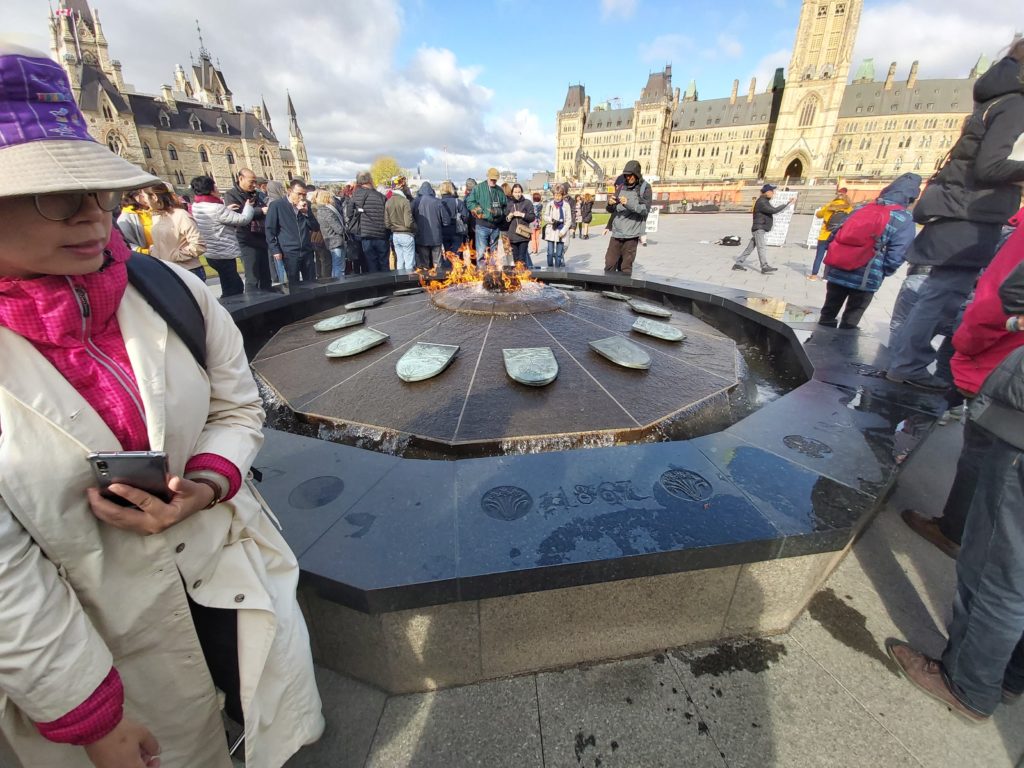
That change needs to be widespread and sweeping, according to Brock University professor Robyn Bourgeois. She says that disrespect towards Indigenous women is entrenched in dominant Canadian discourses.
“It’s everywhere, it’s in our media. It’s in the way the government talks about us, the way the education system talks about us. So it’s dominant Canadian framework and a colonial framework for understanding Indigenous women and girls.” says Bourgeois. “Critical to that idea is there has to be this kind of idea, or this way of thinking, that says Indigenous women and girls are less than,” she says.
Bourgeois traces this idea back to the first settlers in Canada, who wrote about Indigenous women as “objects, pieces of meat for consumption.” But this idea is continued in current depictions of Indigenous women in the media.
Colleen Cardinal, who spoke at the vigil in Ottawa, experienced this first hand. Her sister-in-law, Lynn Jackson, was murdered next to a hiking trail outside of Wetaskiwin, Alberta.
“Her bones were found on June 21, [2004],” says Cardinal. “But the media portrayed her as someone who was possibly up to no good, maybe engaged in sex work.”
The true perpetrator of this violence is the Canadian state, says Bourgeois. Through policies including residential schools, government sponsored religious schools established to assimilate Indigenous children into Euro-Canadian culture, and the Sixties Scoop, a child welfare system in which Indigenous children were “scooped up” and placed in non-Indigenous foster homes or put up for adoption, the Canadian state broke up Indigenous families and subjected many Indigenous children to abuse.
“My sister-in-law and my sisters were Sixties Scoop adoptees,” says Cardinal. “We were brought to a violent home and went back to Edmonton to find our family. A year after that my sister was murdered downtown. She was a mother and was married with two small children. The media again portrayed her as a known prostitute and a drug addict. And right there the dehumanization of my sister began. But we know that this dehumanization of women and girls has been since contact.”
The Final Report from the National Inquiry into Missing and Murdered Indigenous Women and Girls found that “negative sexist and racist representations of Indigenous women, girls, and 2SLGBTQQIA (Two-spirit, lesbian, gay, bisexual, transexual, queer, questioning, intersex and asexual) people are part of Canada’s colonial history.” Early representations of Indigenous women in Canada are intimately tied to the process of colonization. The Euro-constructed image of Indigenous women mirrors Western attitudes toward land of “control, conquest, possession, and exploitation,” says the Report.
“[The colonizers] were trying to wipe out this innate sense of the connection to the land and a natural understanding of how things work,” says Bourgeois. “It’s the elimination of [Indigenous] women’s knowing and doing, period.”
Bridget Tolley emphasized the connection between Indigenous women and the land during her speech on Parliament Hill.
“We are the first women of this land,” said Tolley. “By respecting our women this is one way of doing away with the racism that is the cause for murdering our women. So to each and every person in this circle: raise your voice. Raise your voice for action.”
At a similar event held in Windsor, Ontario, Stephanie Pangowish, a third-year law student at the University of Windsor, echoed this call for action.
“It is beautiful that the Inquiry happened, it is beautiful that it happened but what we need is action,” said Pangowish.
The Windsor event had over 50 attendees and was held at Dieppe Park on the Detroit River. Symbolically, red dresses were hung up on a gazebo to symbolize the more than 1000 missing and murdered Indigenous women and girls in Canada.
“It’s a visual statement of loss,” said emcee Lisa Hill, “There are so many that are nameless and faceless and it’s only now that we’re bringing the names to that.”
“We need action even on the ground level, where we are talking about police forces being aware of cultural issues, cultural information, and even higher up we are talking about systemic racism that is happening everywhere,” said Pangowish.
Distrust of the police to protect Indigenous women was a common theme amongst the speakers. Mista Wasis, the emcee for the Ottawa event, spoke about his sister who was killed 6 years ago at the age of 20 in Toronto after being pushed off a balcony.
“She called the police three times,” said Wasis. “There were three calls to the police and they never came. After the third call she was dead. That’s the story of my sister.”
The Final Report found that “police services and other law enforcement officials have tremendous power and do have the ability to infringe and violate the human rights of Indigenous women, girls, and 2SLGBTQQIA people without remedy or recourse.” The existing oversight and accountability mechanisms, it found, are largely inadequate and fail to elicit the confidence of Indigenous Peoples.
“The police, the government, government employees did us wrong,” said Bridget Tolley. “In the way they investigated and treated our cases, they did us wrong.”
This attitude seems to have been borne out in the investigation and prosecution of Robert Pickton, a pig farmer on Vancouver Island. In 2007, it was found that Pickton had murdered 33 women, 13 of whom were Aboriginal.
According to Wally Oppal, former attorney general of British Columbia, when relatives approached the Vancouver police to ask about a loved one they were invariably told police “don’t have time to look for hookers,” “your daughter is a drug addict,” and “if she wants [to go missing] we can’t stop her.”
According to Amnesty International, the Royal Canadian Mounted Police long denied there was any pattern to the disappearances or that Indigenous women were particularly in danger.
Beverly Jacobs, former President of the Native Women’s Association of Canada, visited Robert Pickton’s farm when she was conducting research for Amnesty International on missing and murdered Indigenous women and girls.
“I went to where it happened,” said Jacobs. “I went to the farm, to the land. There was a message that I needed to go there to experience the trauma and it was horrible. I ended up getting physically sick after leaving that dark place.”
Of the 231 Calls for Justice issued by the National Inquiry, 11 of them relate to police misconduct. The first step, it found, is to acknowledge the historical and current relationship between Indigenous women and the justice system that has been “largely defined by colonialism, racism, bias, discrimination and fundamental cultural and societal differences.”
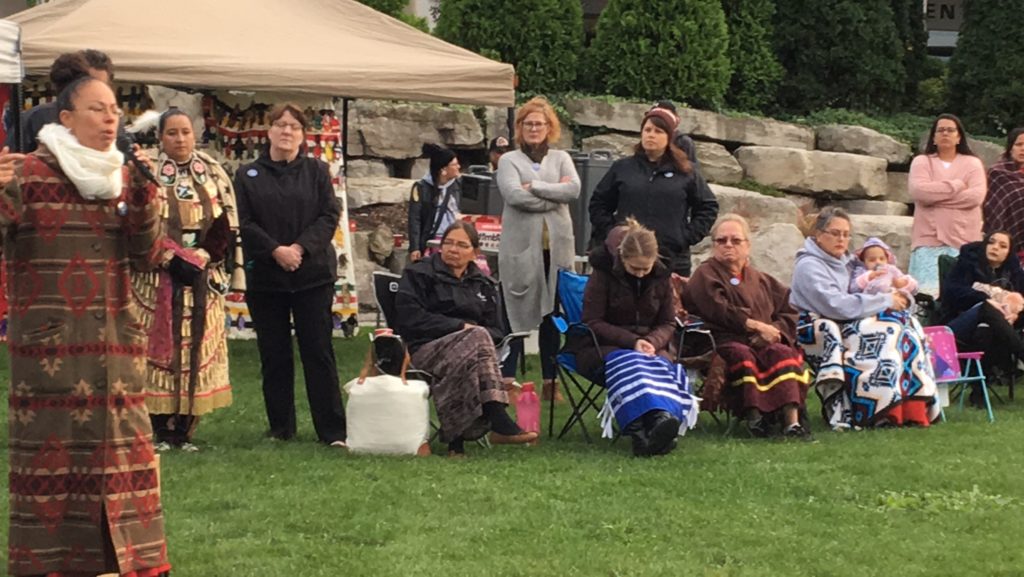
In the end, as much as the Sisters in Spirit vigils were a call to action, they were also a place for healing, and most importantly, a tribute to the many missing and murdered Indigenous women and girls.
Shelley Gilbert, a representative from Legal Assistance of Windsor, concluded the Windsor event.
“By coming here today we have take a small action, in solidarity with missing and murdered Indigenous women and girls, we say no woman is disposable. We say we are thinking of you, we care about you and whether you are safe. You’re not someone to be thrown away, ignored, and forgotten. You are not disposable.”
In Canada, there are over 1200 cases reported on missing and murdered Indigenous women and girls between 1980 and 2012. Recently, the federal government concluded an eighteen-month-long national inquiry into the issue.
The sentiment on Parliament Hill was that change will not come from the government, but rather from the people.
“We need to raise awareness because this has to stop,” said Tolley. “Studies, reports, inquiries, commissions are not going to change it. The hearts and the minds and actions of people have to change.”
That change needs to be widespread and sweeping, according to University of Guelph professor Robyn Bourgeois. She says disrespect towards Indigenous women is entrenched in dominant Canadian discourses.
“It’s everywhere, it’s in our media. It’s in the way the government talks about us, the way the education system talks about us. So it’s dominant Canadian framework and a colonial framework for understanding Indigenous women and girls.” says Bourgeois.
“Critical to that idea is there has to be this kind of idea, or this way of thinking, that says Indigenous women and girls are less than,” she says.
Bourgeois traces this idea back to the first settlers in Canada, who wrote about Indigenous women as “objects, pieces of meat for consumption.” But it’s continued in current depictions of Indigenous women in the media. Colleen Cardinal, who spoke at the vigil in Ottawa, experienced this first hand. Her sister-in-law, Lynn Jackson, was murdered next to a hiking trail outside of Wetaskiwin, Alberta.
“Her bones were found on June 21, 2004,” says Cardinal. “But the media portrayed her as someone who was possibly up to no good, maybe engaged in sex work.”
But the true perpetrator of this violence is the Canadian state, says Bourgeois. Through policies including residential schools, government sponsored religious schools established to assimilate Indigenous children into Euro-Canadian culture, and the Sixties Scoop, a child welfare system in which Indigenous children were “scooped up” and placed in foster homes or adoption, the Canadian state broke up Indigenous families and subjected many Indigenous children to abuse.
“My sister-in-law and my sisters were Sixties Scoop adoptees,” says Cardinal. “We were brought to a violent home and went back to Edmonton to find our family. A year after that my sister was murdered downtown. She was a mother and was married with two small children. The media again portrayed her as a known prostitute and a drug addict. And right there the dehumanization of my sister began. But we know that this dehumanization of women and girls has been since contact.”
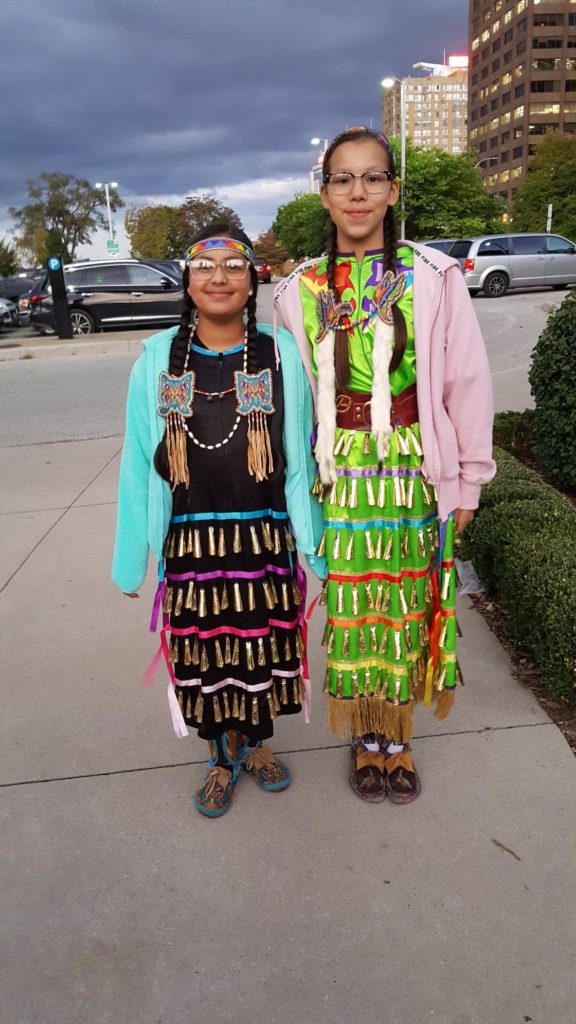
The Final Report from the National Inquiry into Missing and Murdered Indigenous Women and Girls found that “negative sexist and racist representations of Indigenous women, girls, and 2SLGBTQQIA (Two-spirit, lesbian, gay, bisexual, transexual, queer, questioning, intersex and asexual) people are part of Canada’s colonial history.” Early representations of Indigenous women in Canada are intimately tied to the process of colonization. The Euro-constructed image of Indigneous women mirrors Western attitudes toward land of “control, conquest, possession, and exploitation,” says the report.
“[The colonizers] were trying to wipe out this innate sense of the connection to the land and a natural understanding of how things work,” says Bourgeois. “It’s the elimination of [Indigenous] women’s knowing and doing period.”
Bridget Tolley emphasized the connection between Indigenous women and the land during her speech on Parliament Hill.
“We are the first women of this land,” said Tolley. “By respecting our women this is one way of doing away with the racism that is the cause for murdering our women. So to each and every person in this circle: raise your voice. Raise your voice for action.”
At a similar event held in Windsor, Ontario, Stephanie Pangowish, a third year law student at the University of Windsor, echoed this call for action.
“It is beautiful that the inquiry happened, it is beautiful that it happened but what we need is action,” said Stephanie.
The Windsor event had over 50 attendees and was held at Dieppe Park on the Detroit River. Symbolically, red dresses were hung up to symbolize the more than 1000 missing and murdered Indigenous women and girls in Canada.
“It’s a visual statement of loss,” said emcee Lisa Hill, “There are so many that are nameless and faceless and it’s only now that we’re bringing the names to that.”
“We need action even on the ground level, where we are talking about police forces being aware of cultural issues, cultural information, and even higher up we are talking about systemic racism that is happening everywhere,” said Stephanie.
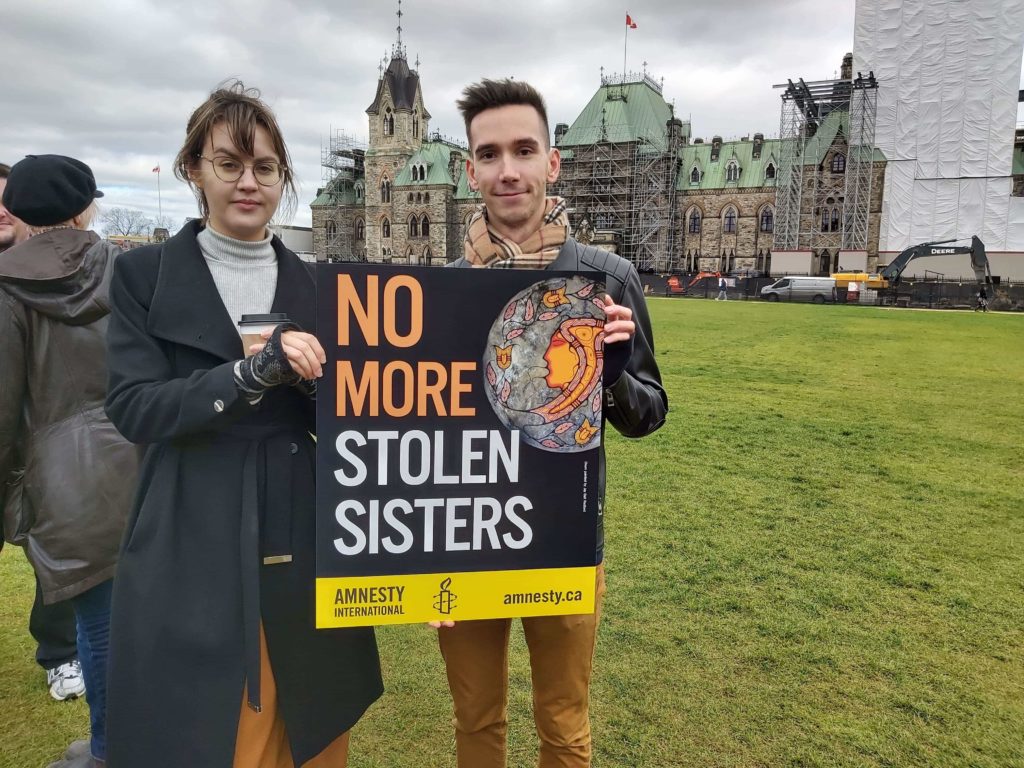
Distrust of the police to protect Indigenous women was a common theme amongst the speakers. Mista Wasis, the MC for the Ottawa event, spoke about his sister was killed 6 years ago at the age of 20 in Toronto by being pushed off a balcony.
“She called the police three times,” said Wasis. “There were three calls to the police and they never came. After the third call she was dead. That’s the story of my sister.”
The Final Report found that “police services and other law enforcement officials have tremendous power and do have the ability to infringe and violate the human rights of Indigenous women, girls, and 2SLGBTQQIA people without remedy or recourse.” The existing oversight and accountability mechanisms, it found, are largely inadequate and fail to elicit the confidence of Indigenous Peoples.
“The police, the government, government employees did us wrong,” said Bridget Tolley. “In the way they investigated and treated our cases, they did us wrong.”
This attitude seems to have been borne out in the investigation and prosecution of Robert Pickton, a pig farmer on Vancouver Island. In 2007, it was found that Pickton had murdered 33 women, 13 of whom were Aboriginal.
According to Wally Oppal, former attorney general of British Columbia, when relatives approached the Vancouver police to ask about a loved one they were invariably told police “don’t have time to look for hookers,” “your daughter is a drug addict,” and “if she wants [to go missing] we can’t stop her.”
According to Amnesty International, the Royal Canadian Mounted Police long denied there was any pattern to the disappearances or that Indigenous women were particularly in danger.
Beverly Jacobs, former President of the Native Women’s Association of Canada visited Robert Picktons farm when she was conducting research for Amnesty International on missing and murdered Indigenous women and girls.
“I went to where it happened,” said Jacobs. “I went to the farm, to the land. There was a message that I needed to go there to experience the trauma and it was horrible. I ended up getting physically sick after leaving that dark place.”
Of the 231 Calls for Justice issued by the National Inquiry 11 of them related to police misconduct. The first step, it found, is to acknowledging the historical and current relationship between Indigenous women and the justice system that has been “largely defined by colonialism, racism, bias, discrimination and fundamental cultural and societal differences.”
In the end as much as the Sisters in Spirit vigils were a call to action they were also a place for healing, and most importantly a tribute to the many missing and murdered Indigneous women and girls.
Shelley Gilbert, a representative from Legal Assistance of Windsor concluded the event.
“By coming here today we have take a small action, in solidarity with missing and murdered Indigenous women and girls we say no woman is disposable. We say we are thinking of you, we care about you and whether you are safe. You’re not someone to be thrown away, ignored, and forgotten. You are not disposable.”
